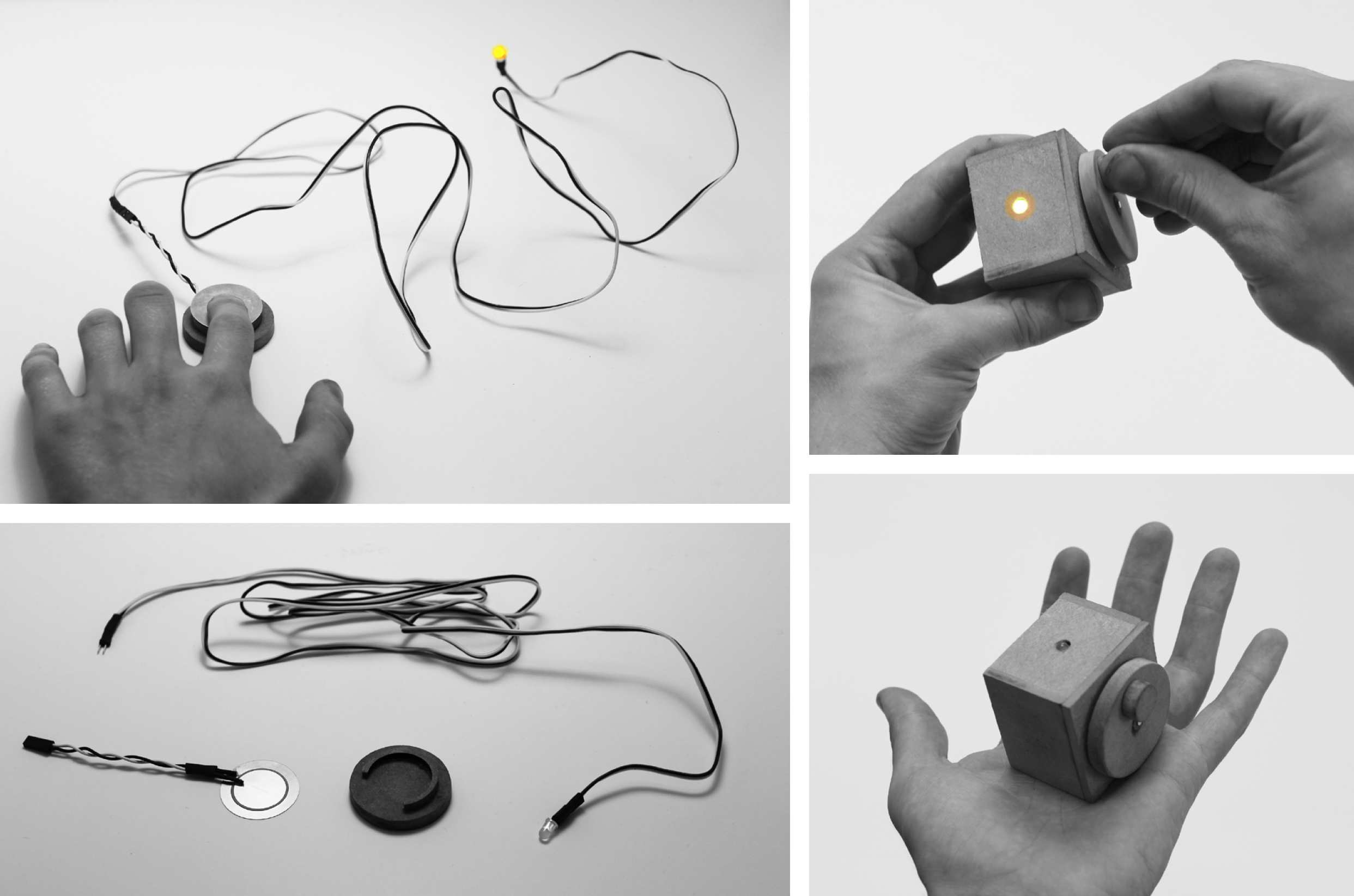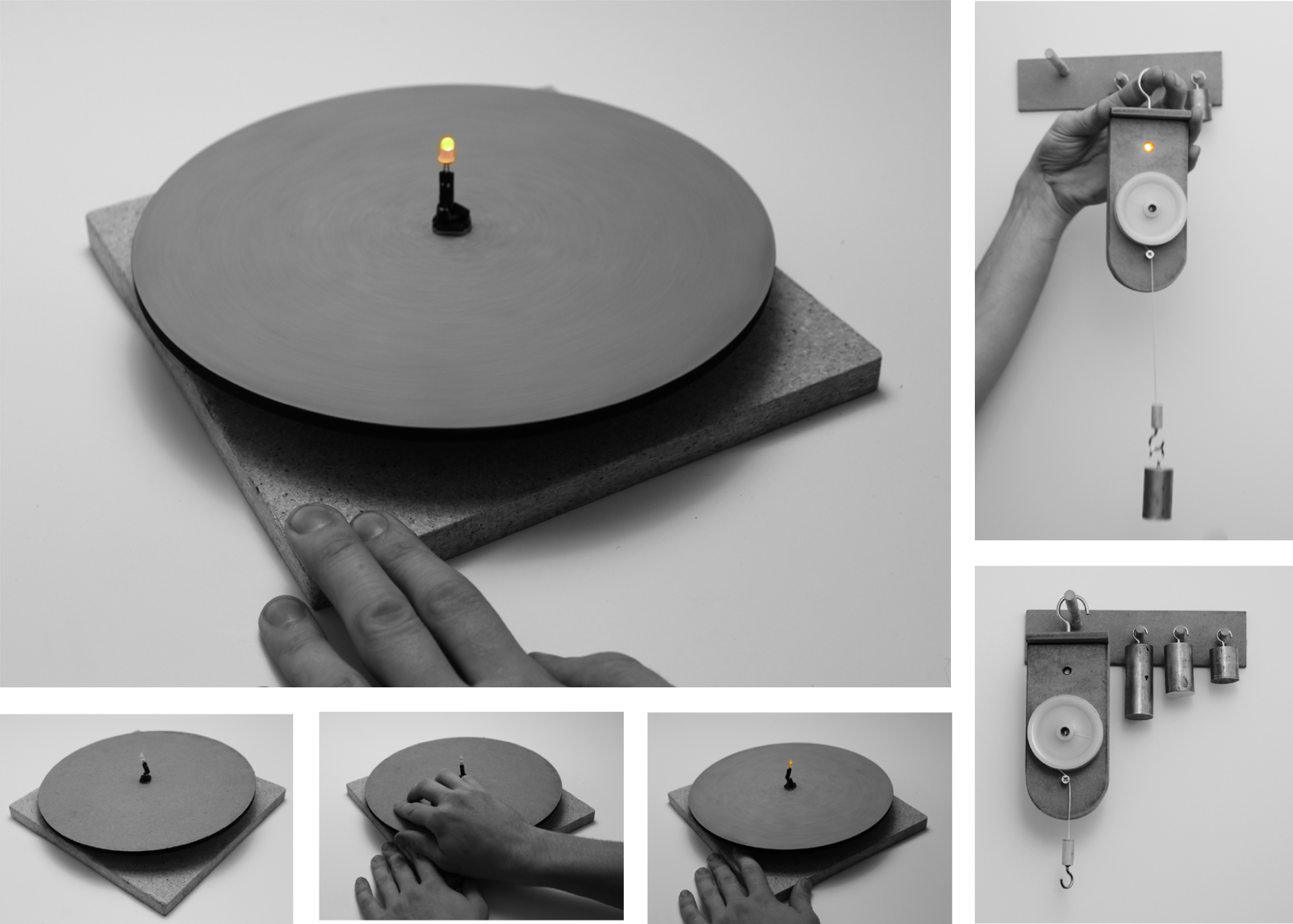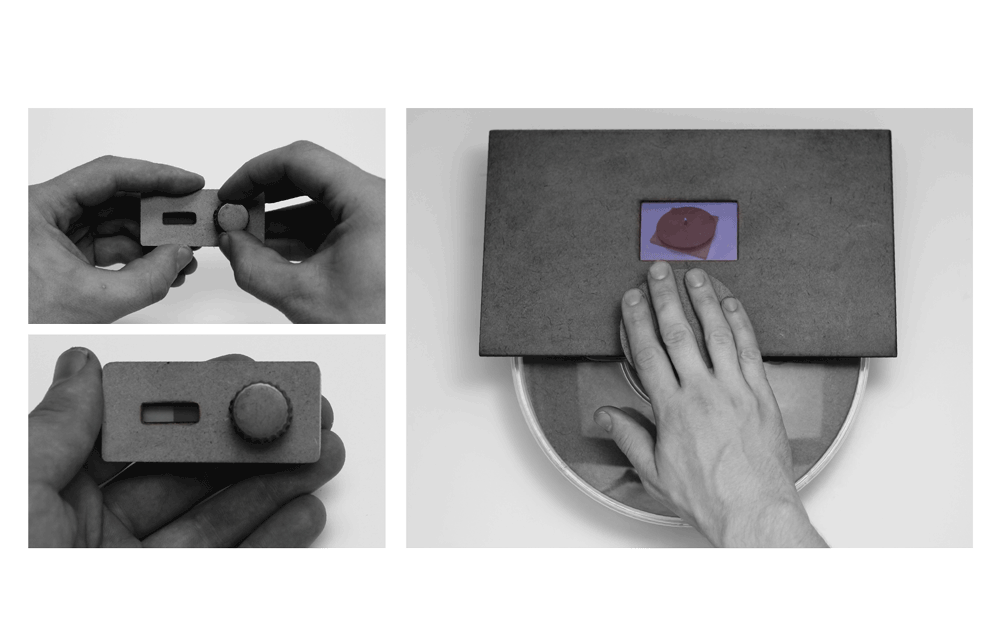Tap and Crank

Tap LED involves a piezo element to generate a momentary illumination via a tapping or pressing/depressing interaction (depending on the polarity). Crank LED involves a DC gear motor (100:1 ratio) to illuminate via a cranking or turning interaction.
Spin and Drop

Spin LED involves a DC gear motor (30:1 ratio) to illuminate by spinning a disc, which acts as a flywheel. Drop LED involves a DC gear motor (100:1) connected to a pulley around which a string around which a hook is wound. Placing a weight on the hook causes the pulley to rotate and illuminate the LED.
Low-Power Displays

These simple interactions are then scaled-up toward more complex outputs, such as activating low-power displays. Turn E-Ink involves turning a dial to update an e-ink display. Push-To-Spin OLED involves a salad-spinner mechanism to activate an OLED display.
Crank Video Device

A concept for a Crank Video device evoking scenarios of sentimentality and heirlooms explores potentials for human-powered electric forms to expand electrifiable space, and engage through bodily involvement, and forge new relationships with power, energy, and materials.
These form experiments and prototypes are set within a broader phenomenological inquiry (a detailed accounting of human experience) into electrical power and energy as materials.
Related Publications
Pierce, J. and Paulos, E. (2013). Electric Materialities and Interactive Technology. In Proceedings of CHI Conference on Human Factors in Computer Systems, Paris, France. CHI '13. ACM Press, New York, NY.